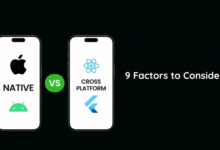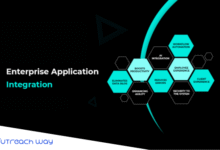The Ultimate Free Guide to Successful App & Software Development

Developing an app or software requires careful and well thought out planning to ensure the final product is not only functional but also successful. To help you with this process, we offer a free guide that walks you step-by-step through the various phases of software development. In this article, we’ll introduce you to the guide and explain The Ultimate Free Guide to Successful App launch & Software Development.
Table of Content
The Guide: Your Guide to Successful Software Development
Our guide is the result of years of experience and is specifically designed to help you overcome the most common challenges in software development. Here’s an overview of what you can expect:
Structured Planning Steps
From the initial idea to rollout, our guide will guide you through all critical development phases. Each step is clearly defined to help you manage your project efficiently and effectively. Planning includes the following key phases:
- Idea generation and requirements analysis: Start with a clear vision. Define the main goals, target audience, and added value of the software. Create a requirements document that describes both functional and non-functional requirements.
- Project planning: Create a detailed project plan that defines timelines, milestones, resources, and responsibilities. Clear communication with all stakeholders is crucial to managing expectations.
- Design and Prototyping: In this phase, you develop wireframes and prototypes to get an initial visual representation of the software. Use these to gather early feedback from stakeholders and optimize the design.
- Development: The actual programming begins. It’s important to regularly review progress and align with planned milestones. Agile methods like Scrum or Kanban are ideal for responding flexibly to changes.
- Testing: Comprehensively tests the software to ensure it meets requirements. Performs functional tests, integration tests, and user acceptance tests (UAT) to identify and resolve defects early.
- Rollout and Go-Live: Prepares for market launch. This includes deployment planning, user training, and monitoring the initial live phase to quickly address potential issues.
- Maintenance and further development: The project doesn’t stop even after launch. Plan regular updates, maintenance, and further developments to adapt the software to new requirements and technologies.
Best Practices:
Benefit from proven methods and practices that have proven successful in numerous projects. These practices are designed to ensure the quality of your software and maximize your project’s success.
- Agile development methods: Use agile approaches such as Scrum or Kanban to work iteratively and flexibly. This enables continuous improvement and adaptation of the software to changing requirements.
- Code reviews and pair programming: Relies on regular code reviews and collaborative programming to improve code quality and share knowledge within the team.
- Documentation: Although time-consuming, comprehensive documentation is essential. It serves as a reference for the team and facilitates future maintenance.
- Communication and feedback: Create transparent communication channels. Regular status updates, meetings, and an open feedback culture help avoid misunderstandings and keep the team on track.
Risk management
This guide will help you identify potential risks early and manage them effectively. Proactive risk management is crucial to ensuring your project runs smoothly and minimizing unforeseen issues.
- Risk assessment: Identifies potential risks early in the project. These could include technical challenges, staffing bottlenecks, or budget overruns.
- Prioritization and action planning: Assess risks based on probability and impact. Develop preventive measures and response plans to act quickly in the event of an emergency.
- Continuous monitoring: Monitors risks throughout the project. Conducts regular risk reviews to identify new risks and assess existing ones.
Cost efficiency
Learn how to make the most of your budget. Our guide shows you how to avoid costly mistakes and use your resources efficiently.
- Budget planning: Establish a realistic budget that takes into account all phases of the project, including a buffer for unforeseen costs.
- Cost-benefit analyses: Regular cost-benefit analyses help you make informed decisions. Prioritize features and functions that offer the greatest added value.
- Automation: Use automation tools for testing, deployment, and monitoring to simplify repetitive tasks and reduce costs.
- Outsourcing and external expertise: Consider which tasks should be handled internally and which should be outsourced. External specialists can help bridge bottlenecks and bring specific expertise to the project.
Why we are your ideal partner:
After familiarizing yourself with our guide, you might want to know why our team is the right partner for your project. Here are some reasons that set us apart:
Expertise and Experience
Our team of experienced developers, designers, and project managers has extensive knowledge of various technologies and industries. This expertise enables us to offer customized solutions tailored precisely to your needs.
Agile Development Processes
We rely on agile methods that enable flexibility and continuous improvement throughout the entire development process.
Customer Centric Approach
Your needs are our top priority. We are committed to ensuring that every software solution exceeds your expectations and creates real value for your business.
Sustainable Partnerships
We view our customer relationships as long-term partnerships in which we provide continuous support and innovation. Our goal is to sustainably strengthen your business with our solutions.
Conclusion
Our guide guides you step by step through the entire software development process. It offers valuable insights, proven methods, and concrete recommendations for successfully managing your project. Rely on structured planning, proven best practices, strong risk management, and thoughtful cost efficiency to lead your software to success. We are confident that with this guide, you will be well-equipped to master the challenges of software development.









